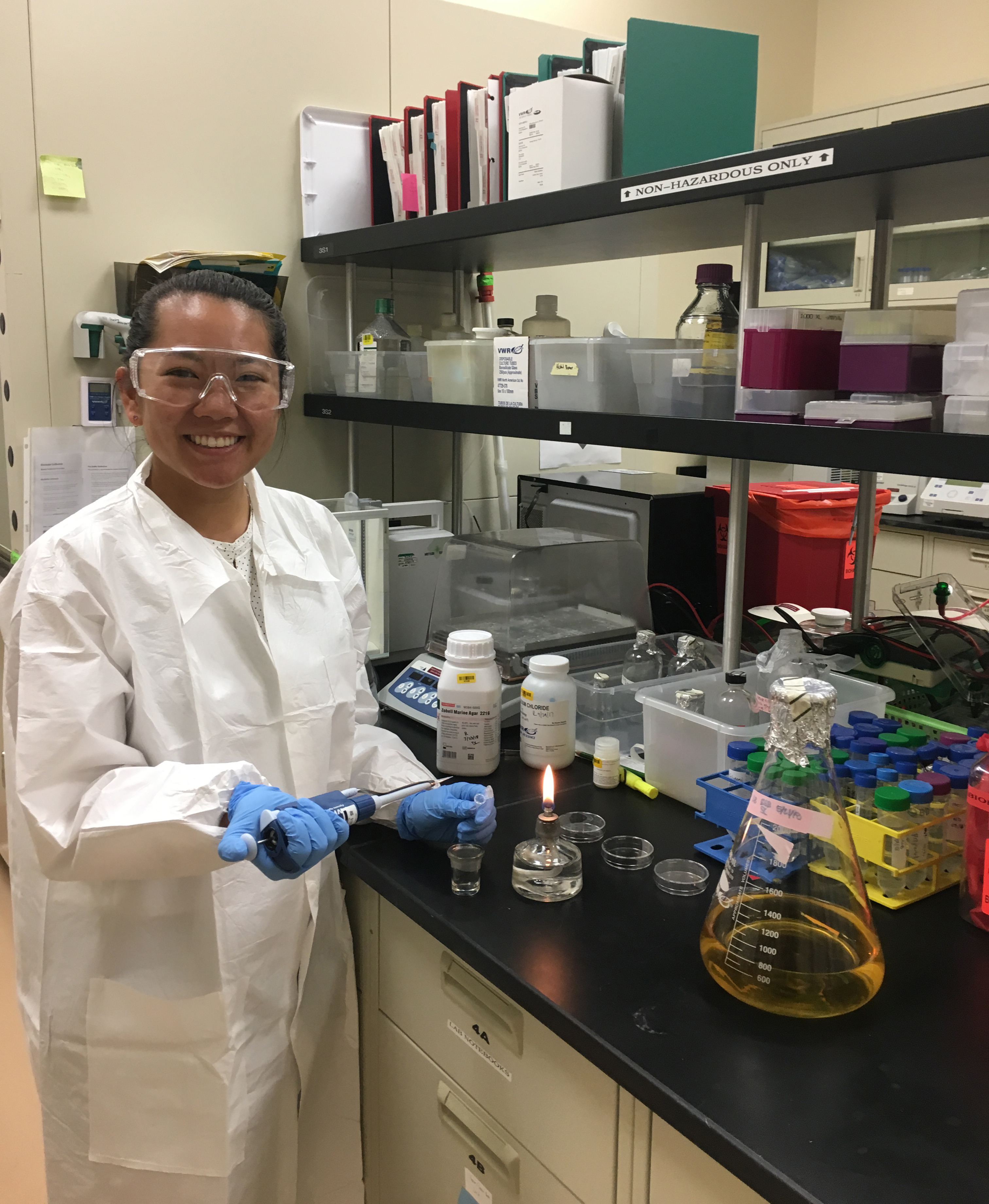
Growing Bacteria that Gobbles Up Microplastics
NPR, the Guardian, National Geographic…it seems anytime you tune into the news, or open a magazine or newspaper these days, you'll find a story about microplastics making their way into our oceans and into our food supply. According to earthday.org, of the 8 million metric tons of plastic thrown into the ocean annually, about 236,000 tons are microplastic—bits broken down by heat, wind, waves, and sunlight to pieces smaller than one-fifth of an inch in size. Unfortunately, the tiny bits look very much like food to marine life. Found in vast territories of Earth’s waters and discovered at a depth of 11 km, these microparticles threaten the health of fish and seafood—and the humans who consume them.
Looking for a way to combat this growing problem, bioengineering Professor Zhiwen (Jonathan) Zhang theorized it may be possible to develop a bacteria to consume microplastics. To tackle the problem, Zhang invited rising senior Brie Goo to dive in as a researcher supported by the School of Engineering’s Kuehler Undergraduate Summer Research program.
“When he proposed the idea, I immediately wanted to get to work," she said. "Since I’m from Hawaii, I’ve learned a lot about plastic pollution. Solving it is a passion of mine. Currently, bacteria exist in oil-spill areas that use petroleum as their energy source. Since plastics are synthetic polymers of petroleum, our hypothesis is that such bacteria could be engineered to host enzymes that use plastics as their carbon source.
"I started looking for research papers on the subject and found just one about a type of bacteria discovered to have naturally evolved to eat plastics in a waste dump in Japan, but nothing about plastic-eating bacteria in saltwater environments. This is a really new idea,” Goo discovered many technologies for dealing with larger items like plastic bottles, plastic bags, and so on. "However," she added, "the smaller pieces of plastics—microplastics—are more difficult to collect; therefore, I feel that a biomolecular approach toward this problem is an interesting and new angle to explore."
Her first task was to grow the bacteria whose enzymes use petroleum as their carbon source in the media they prefer, using the same components as saltwater. Next, she exposed the bacteria to microplastics, but there was a problem. “I reached out to Adventure Scientists, an organization that has launched a Global Microplastics Initiative to map microplastic pollution around the globe in order to help limit plastic waste. They sent samples of microplastics for me to use as the carbon source, but the samples were really small and didn’t provide enough material for multiple experiments, and it takes a long time to grow the bacteria on this carbon source,” she explained.
With fall quarter rapidly approaching, Goo returned home for a visit. There she found no shortage of microplastic samples on Oahu’s beaches. She collected them to bring back to campus for her tests. “Right now, I’m trying to see if the bacteria can survive with plastics as their carbon source, and I'm troubleshooting why they are not consuming the microplastics. Dr. Zhang and I are also considering using a plastic softener in our experiments and I’m researching that.
Identifying what's not working so far has been a challenge. "It could be that there is not enough contact between the microplastic particles and the bacterial cells," she said. "If we break down the plastic into a smaller form, we can increase the surface area of plastic particles for the bacteria to digest, and they may have a better shot at survival in the absence of another carbon source." Goo notes that if they are successful in developing the bacteria, other factors will pose further questions: "How long will it survive? What is its lifespan? Can we increase their digestion efficiency? And what about the ethical issues? If microplastics are being consumed, what is being excreted, and how does that affect the environment?"
But those issues are far off on the horizon. “Right now, we’re in the beginning phase of hypothesizing that bacteria can consume microplastics. A biomolecular and microbial approach to the problem of plastics pollution is novel and needs to be explored,” she said. “It’s exciting and frustrating when the bacteria are not doing what you want them to do, but there is so much potential with this project; I’m just happy to have the opportunity to be a part of it!”
Brie Goo ’19 spent the summer researching a biomolecular approach to addressing microplastic pollution.